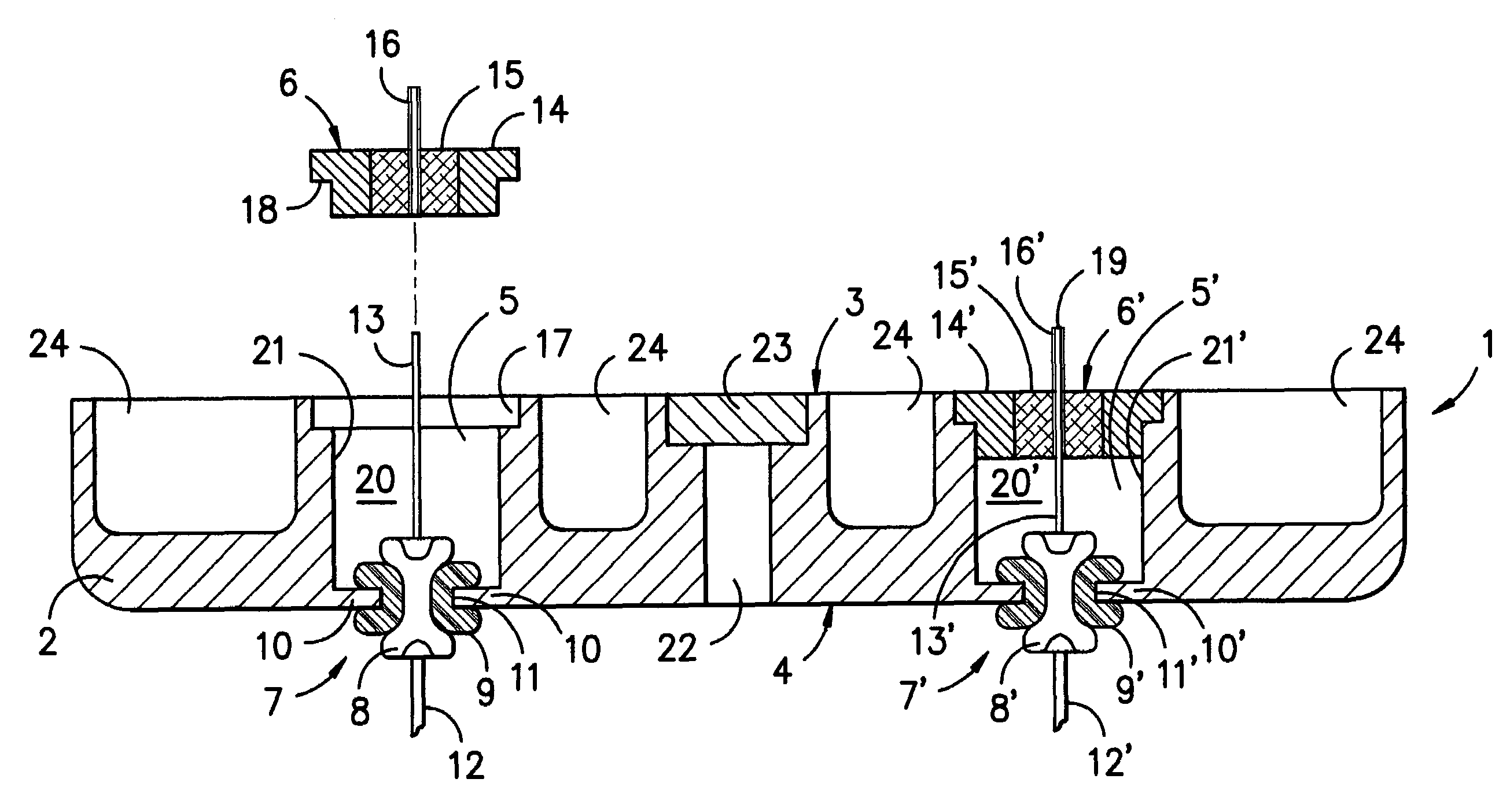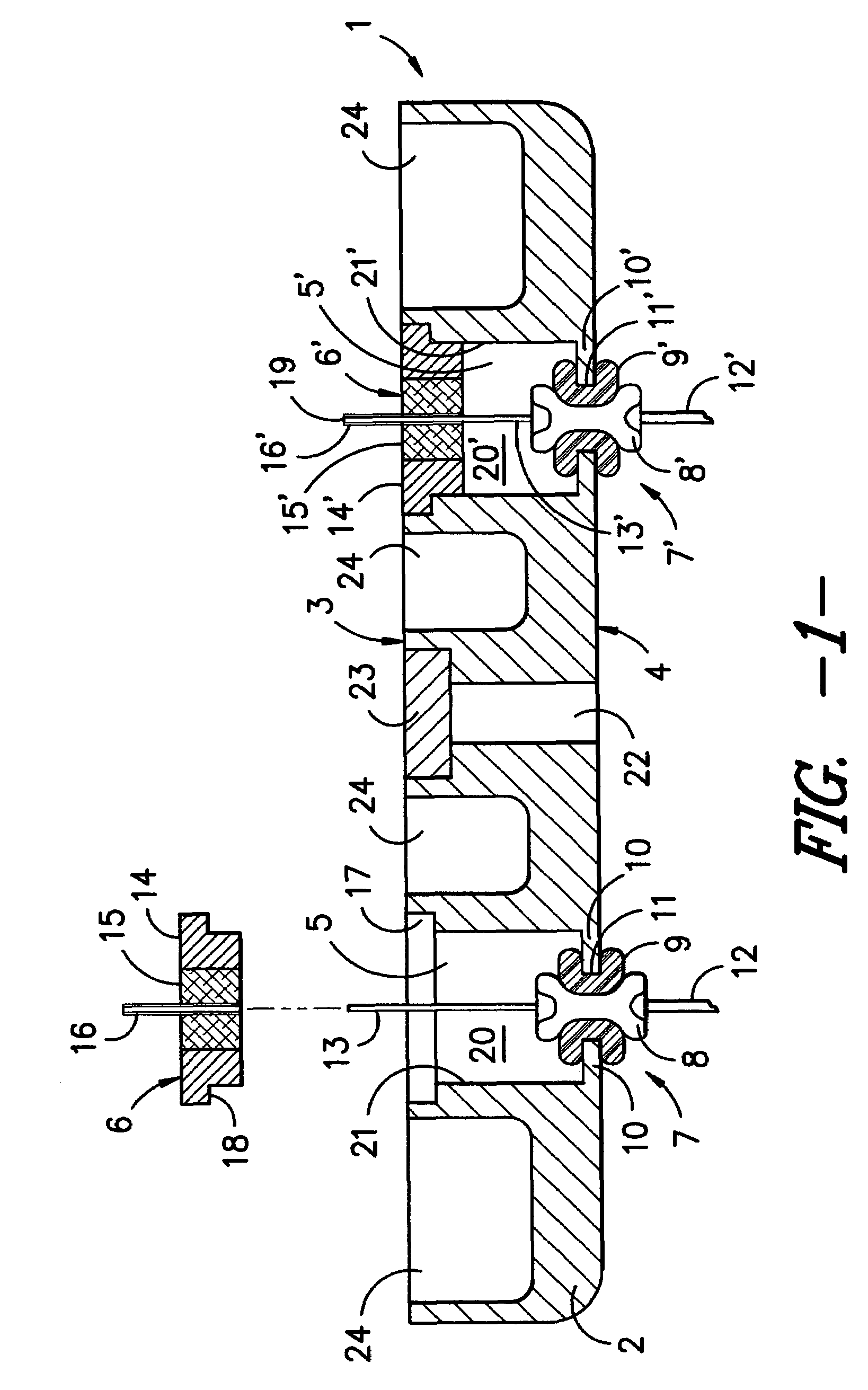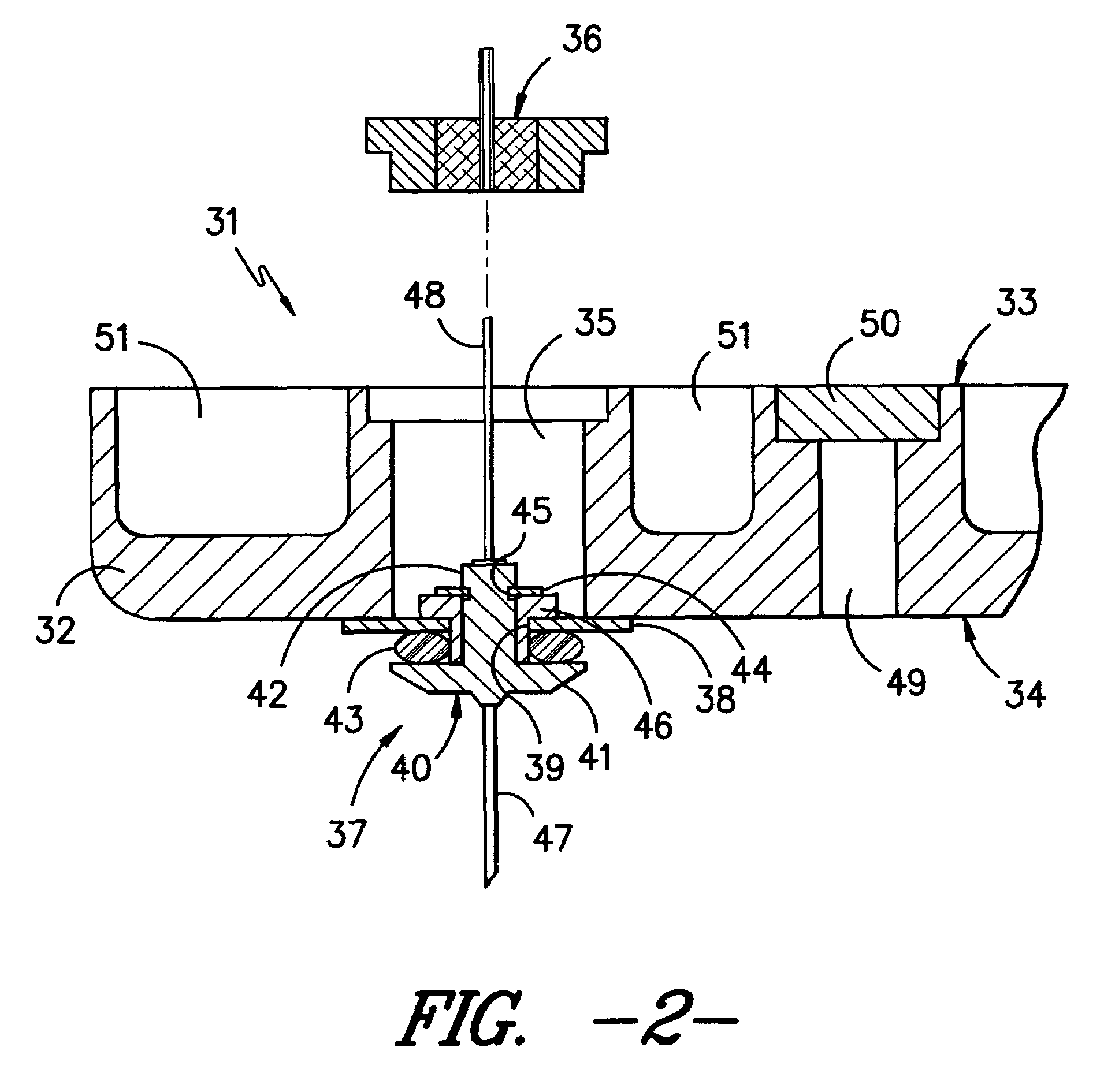Hermetically sealed electrolytic capacitor
a capacitor and hermetically sealed technology, applied in the field of electrolytic capacitors, can solve the problems of non-hermetically sealed capacitors, leakage around conventional non-hermetically sealed polymeric seals, and failure of capacitors containing electrolyte solutions, etc., and achieve the effect of reducing the cost of aluminum to glass seals and not being able to achieve hermetically sealed capacitors
- Summary
- Abstract
- Description
- Claims
- Application Information
AI Technical Summary
Benefits of technology
Problems solved by technology
Method used
Image
Examples
Embodiment Construction
[0054]Without limiting the scope of the invention, the preferred embodiments and features are hereinafter set forth. All of the United States patents, which are cited in the specification, are hereby incorporated by reference. Unless otherwise indicated, conditions are 25° C., 1 atmosphere of pressure and 50% relative humidity.
[0055]Referring to FIG. 1, lid 1 comprises metal plate 2, which is shaped to be inserted in and to seal a capacitor case. Plate 2 has an outer side3, which is part of the outer surface of the capacitor, when it is assembled, and an underside 4, which faces the interior of the capacitor and is exposed to the electrolyte solution. At least one hole 5 extends through the thickness of plate 2. Lid 1 also includes a second hole, designated as hole 5′, so that both the anode and the cathode of the capacitor may be connected through lid 1.
[0056]Hermetic seal 6 covers hole 5 adjacent the outer side 3 of plate 2, and liquid seal 7 covers hole 5 adjacent the underside 4...
PUM
 Login to View More
Login to View More Abstract
Description
Claims
Application Information
 Login to View More
Login to View More - R&D
- Intellectual Property
- Life Sciences
- Materials
- Tech Scout
- Unparalleled Data Quality
- Higher Quality Content
- 60% Fewer Hallucinations
Browse by: Latest US Patents, China's latest patents, Technical Efficacy Thesaurus, Application Domain, Technology Topic, Popular Technical Reports.
© 2025 PatSnap. All rights reserved.Legal|Privacy policy|Modern Slavery Act Transparency Statement|Sitemap|About US| Contact US: help@patsnap.com



